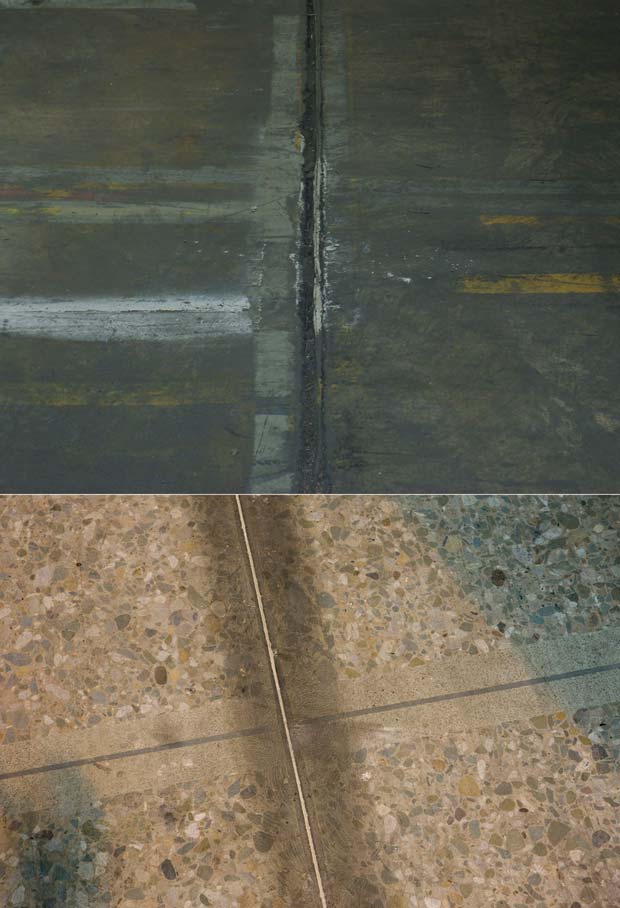Floor n. 1 the bottom surface of a room, on which people walk and which supports the furniture. 2 the boards or other material of which this is made. 3 the lowest limit of prices, etc.
 Joint n. 1 a junction or mode of joining parts together. 2 the place where two things are joined together. 3 a natural fissure or line of parting traversing rocks in a straight and well determined line. 4 (sl.) a bar or nightclub.
Joint n. 1 a junction or mode of joining parts together. 2 the place where two things are joined together. 3 a natural fissure or line of parting traversing rocks in a straight and well determined line. 4 (sl.) a bar or nightclub.
These are just a few examples of the variety of definitions taken from a concise dictionary for each of the words above. Take this a step further and combine them to make FloorJoint; you could be forgiven for following a straight line to a bar, pay the lowest prices and eventually wake up on the bottom surface of a room, hopefully without too much damage being caused!
When it comes to concrete industrial floor slabs, the definition of floor joints for the building user should be more straightforward: Look after them and they will look after you.
Technically joints are unavoidable in all concrete floor slabs and are provided for two main reasons; to relieve the tensile stresses induced by drying shrinkage or temperature changes and to cater for breaks in the construction process. Another unavoidable factor for floor joints particularly in a busy warehouse operation is maintenance of the joints. The arrises (slab edges) are vulnerable to damage caused by the movement of Materials Handling Equipment (MHE) passing over the joints. Once the initial damage to the arris has occurred it never gets better and this can generally result in more expensive repairs being required, not to mention the disruption to the warehouse operation and impact on the MHE operators.
More often than not carrying out expensive repairs to damaged joints is reactive and incurs unplanned maintenance, which in our experience is not budgeted for. The repair costs can therefore sometimes come as a shock. Good quality arris repairs are not cheap however when done properly by an industrial flooring specialist they will stand the test of time. Warehouse users can avoid or reduce the need to have costly repairs done by adopting a more proactive approach to floor maintenance and having the floor assessed on a regular basis. Regular surveys of the floor will highlight damage at the early stages, which will enable a more cost effective repair to be carried out. This ‘stitch in time’ approach can play an effective part to help increase productivity in an operational warehouse by ensuring the floor is maintained to a high standard to allow the MHE to perform at their optimum capacity.
In essence, the partnership of quality assured repairs and consistent floor assessment by a specialist industrial flooring organisation will ensure streamline provision without opting for the bottom line.





Comments are closed.